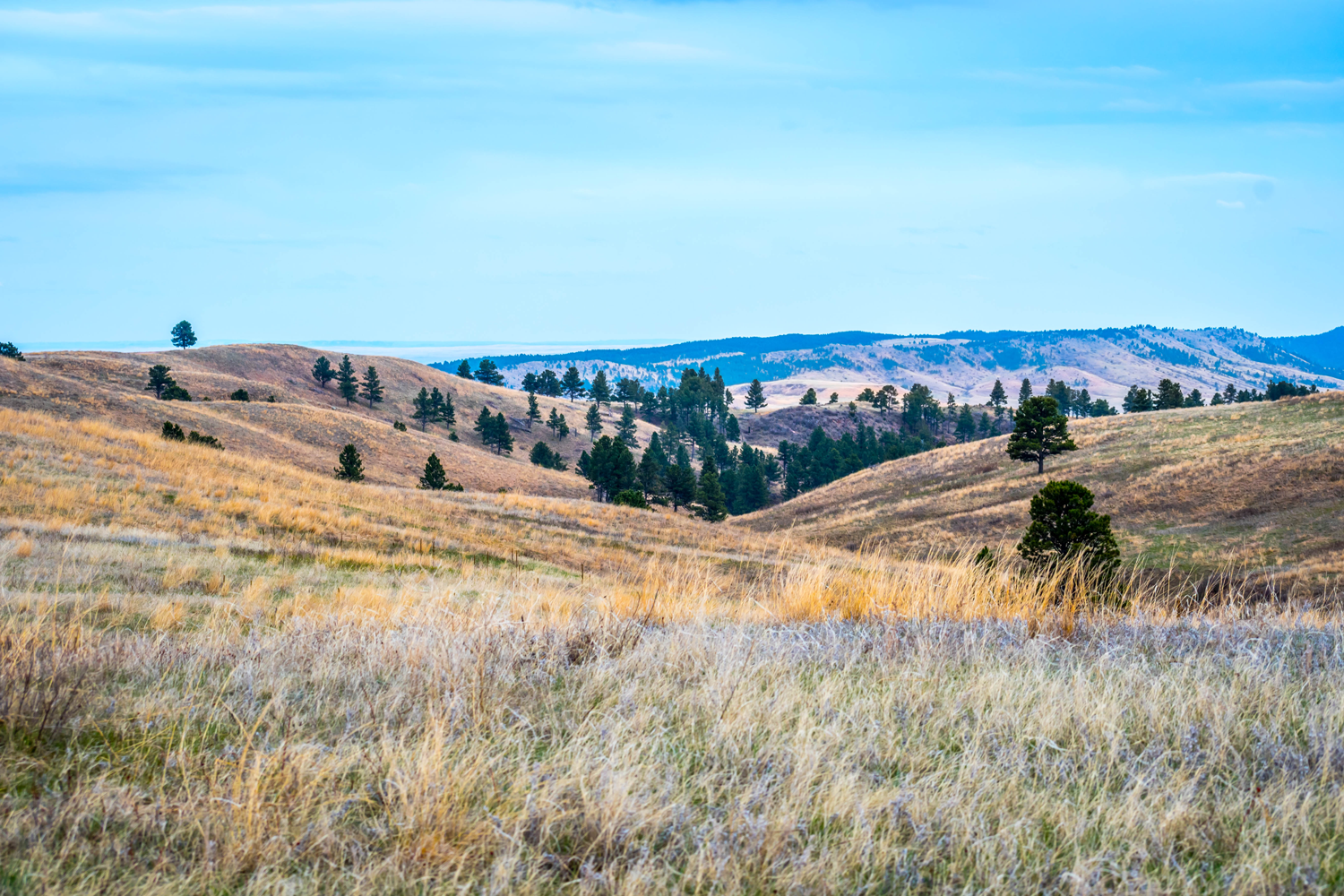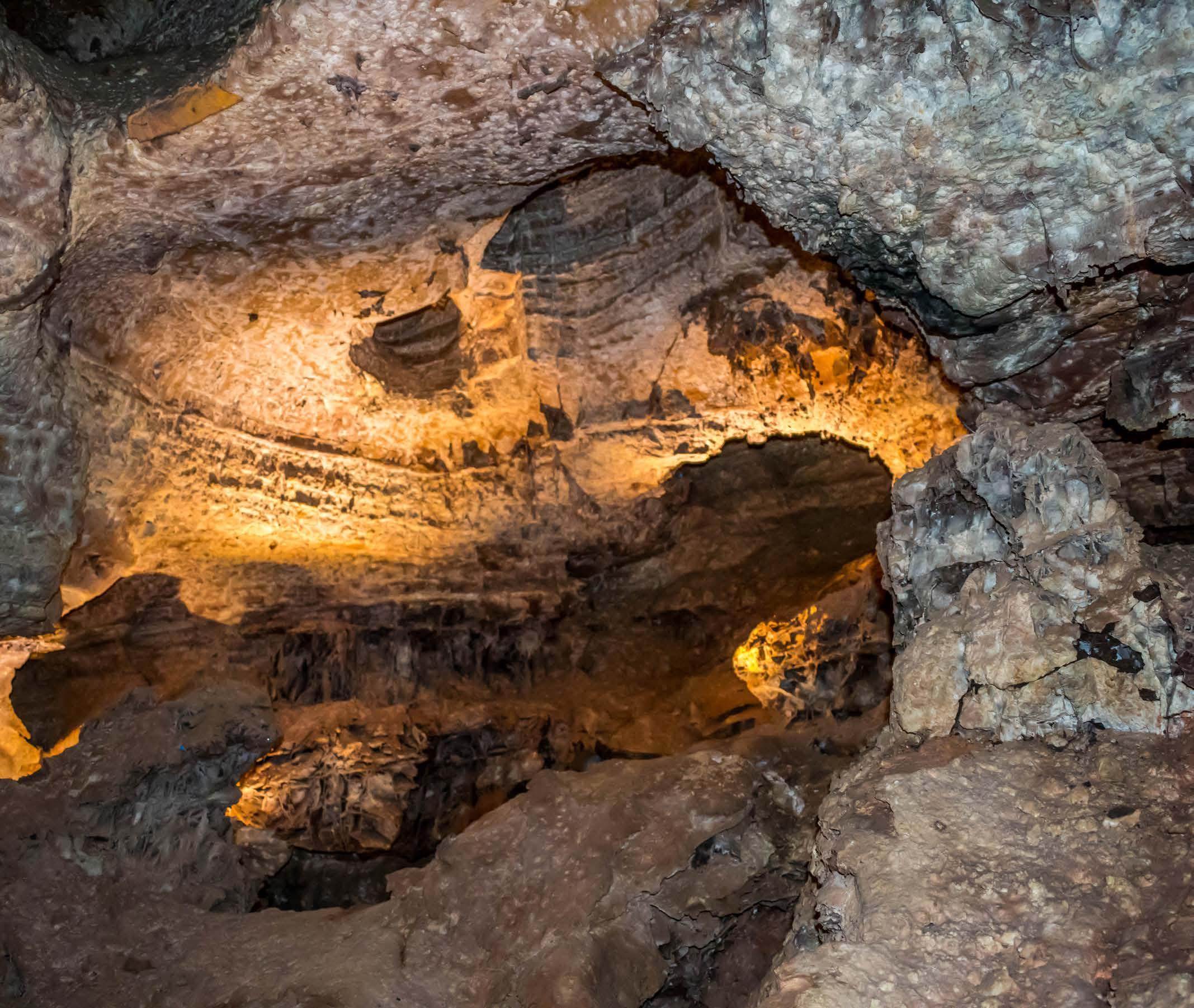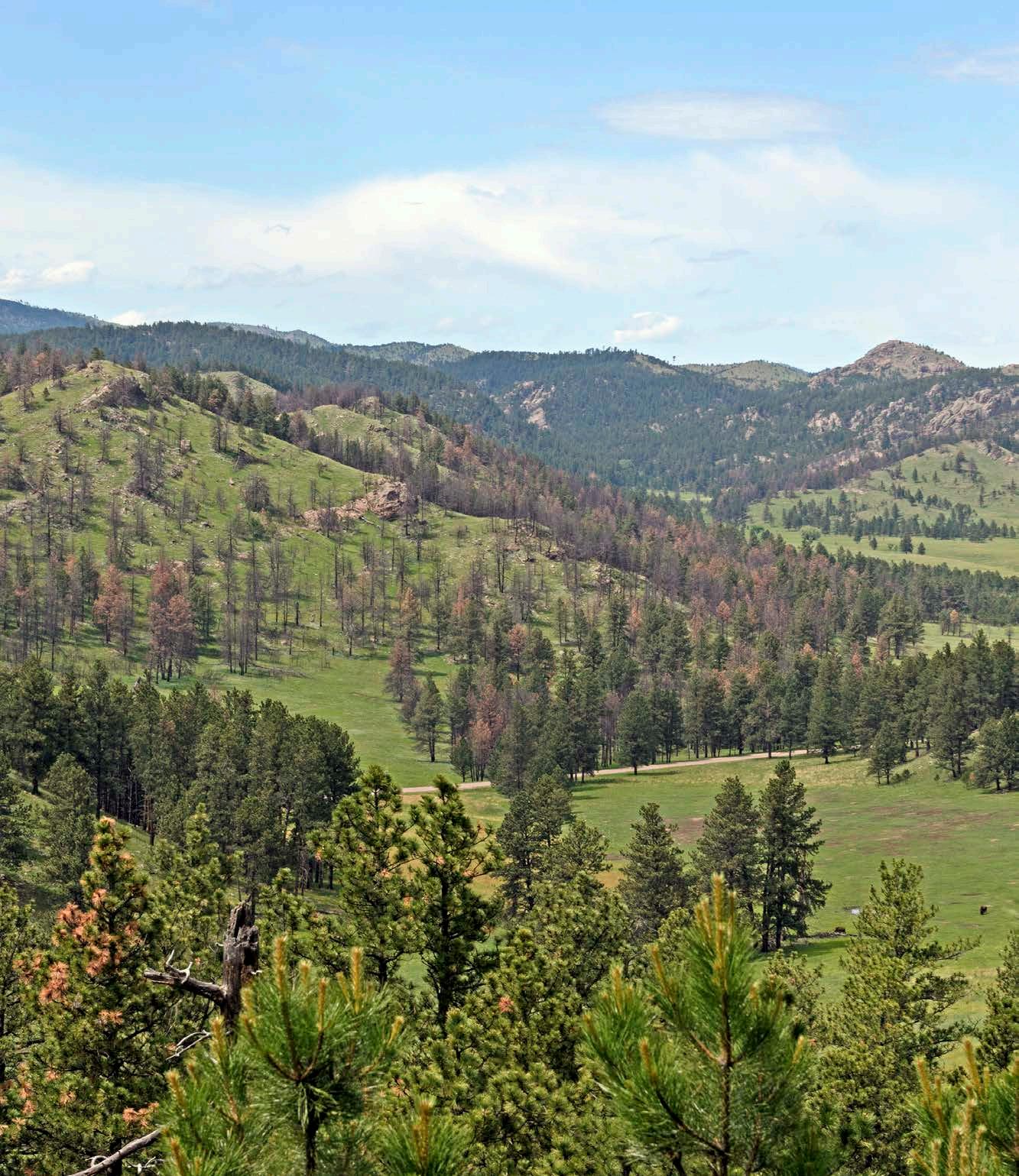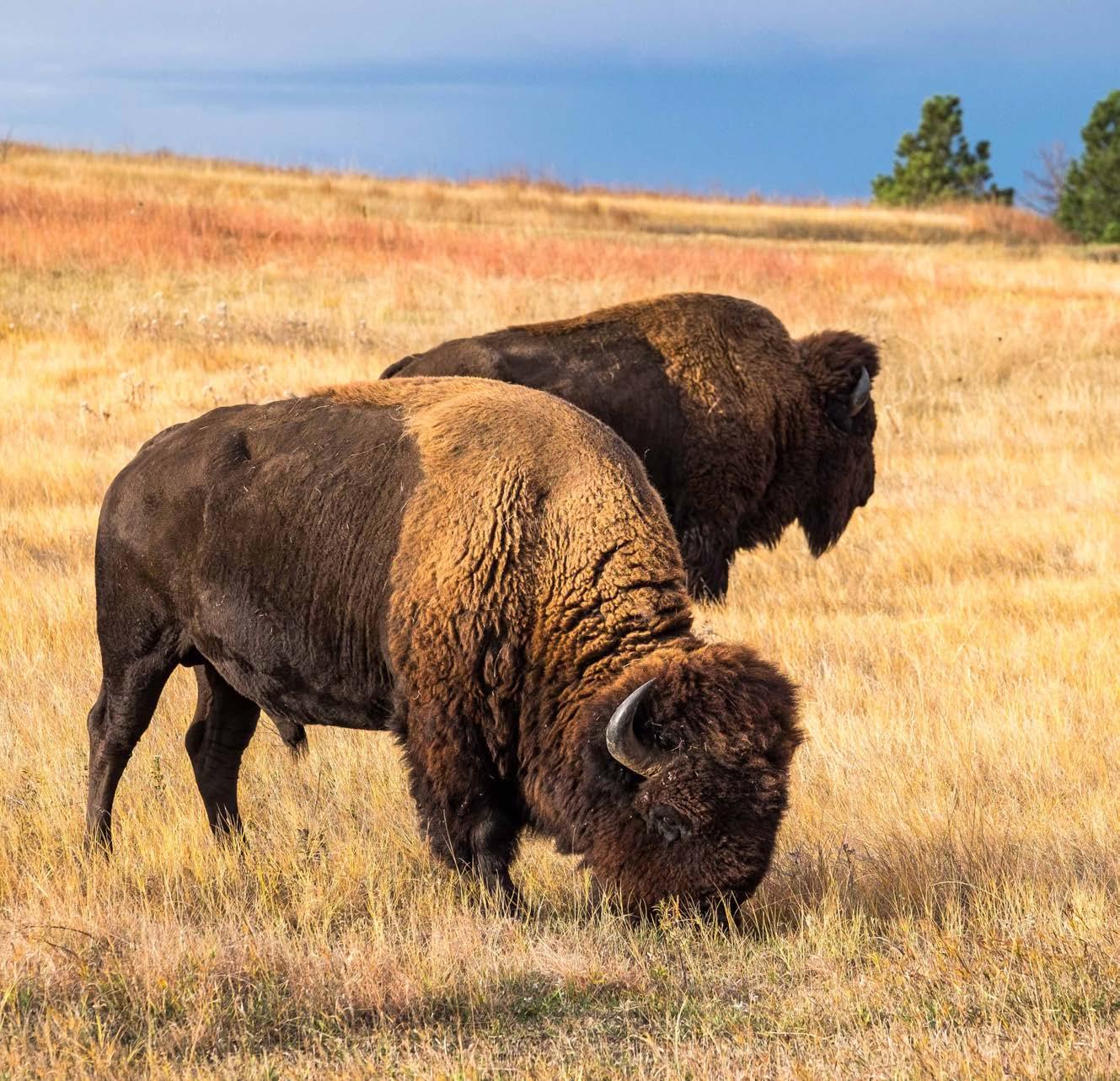
4 minute read
Wind Cave National Park
Tucked into the southwestern corner of South Dakota, Wind Cave National Park is best known for containing one of the longest, most complex cave systems in the world. In the subterranean passages, watch for boxwork, a unique, rarely seen formation. Made of thin blades of calcite that project from cave walls and ceilings, it forms a honeycomb pattern.
Above, an intact prairie and ponderosa forest is intersected by hiking trails. Incredible Black Hills scenery creates a home for some of North America’s most iconic wildlife. Meanwhile, prairie dog towns — or colonies — offer sightings of these entertaining, social creatures.
A place of mystery and abundant oral history, native people called the Black Hills home since time immemorial.
The Flora and Fauna
A tale of two vastly different worlds within the park’s boundaries, its cave is a seldom-seen mix of needle-like frostwork; knobby cave popcorn; rare boxwork; stalactites; stalagmites; dogtooth spar crystals; and flowstone.
Above ground, bison, elk and pronghorn live among American bison, endangered black-footed ferrets, elk, mule deer, coyotes and secretive bobcats. Challenging as the environment may be, several species of reptiles and amphibians — from trilling frogs to poisonous prairie rattlesnakes — are residents.
Vanilla-scented ponderosa pines give way to prairie grasses and delicate wildflowers. Punctuated by white sego lilies, purple coneflowers and cheery sunflowers, the flora is an unexpected feast for the eyes.
The Weather
Generally semi-arid, with mild winters and warm summers, Wind Cave’s weather is greatly influenced by the Rocky Mountains to the west, as well as the high peaks of the northern Black Hills. It’s significantly warmer and drier than the northern hills, even when arctic air masses move south from Canada.
The winter snowfall averages 30 inches. Spring and fall days alternate between warm and sunny, cool and windy, and rainy. Summer ushers in warm daytime temperatures and cool evenings, with oft-occurring, severe thunderstorms, hail and lightning in June and July.
Be cautious of flash-flooding and keep an eye on weather conditions on the park’s website.
The Hikes, Drives and Viewpoints
Guided Cave Tours

Getty
No visit to the park is complete without taking a guided tour of the cave. Options include the hour-long Garden of Eden tour; the slightly longer North Entrance tour; or the strenuous Fairgrounds tour, a lengthier chance to view boxwork; frostwork and cave popcorn, with steep stair climbs.
Raskin Ridge Interpretive Trail
The 1-mile Raskin Ridge Interpretive Trail is a short, stunning hike to the highest point in the park, with expansive views of Badlands National Park and Buffalo Gap on clear days.
Lookout Point & Centennial Loop Trails
Combine the Lookout Point and Centennial Loop Trails for a 5.2-mile taste of the 113-mile Centennial Trail, which runs from Bear Butte to Wind Cave National Park. A narrow trek mostly upon slickrock, it features a lookout from the park’s pinnacle and vast views across mixed-grass prairie and ponderosa forest.
Cold Brook Canyon Trail
A 2.8-mile out-and-back trail near Custer, the 2.8-mile Cold Brook Canyon Trail winds through its namesake, with opportunities to glimpse raptors and prairie dog colonies.

Getty
Wind Cave Canyon Trail
The 3.8-mile out-and-back Wind Cave Canyon takes hikers along an old road to the park’s boundary, seeing limestone cliffs, which are nesting habitats for cliff swallows, canyon wrens and great horned owls.
US Highway 385 & South Dakota Highway 87 Drives
Both U.S. Highway 385 and South Dakota Highway 87 — the two main roads through the park — afford scenic drives with pull-outs for appreciating the landscape and spotting wildlife.

Getty
About the Park
Location - Southwestern corner of South Dakota
Established - January 9, 1903
Area - 33,847 acres










